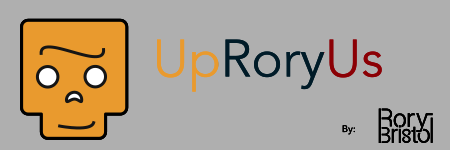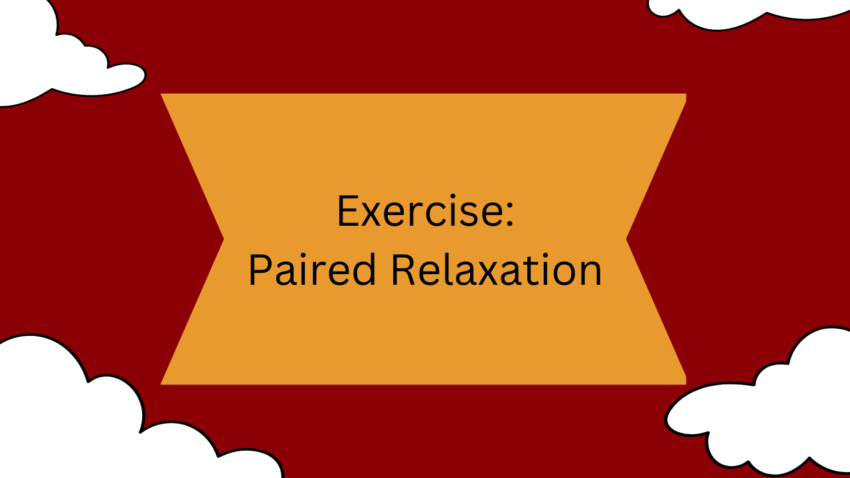Today we’re looking at the Paired Relaxation exercise, and in the YouTube video, I walk you through practicing it yourself. With this technique, we breathe in while tensing different muscle groups, then hold our breath and the tension for a few seconds before relaxing and breathing out at the same time.
How Does This Work?
The Paired Relaxation (sometimes called the Paired Breathing and Relaxation or Paired Breathing) exercise works on several principles which, when combined, give us a comprehensive tool. The first portion can be called memory training or just “practice”. By doing the exercise in a calm environment many times, we teach our brain what “calm” or “safe” looks like. Then we have somewhere to steer our brain when we need that calm. The next component comes from directing our attention. By focusing on different parts of our body while we tense them, we give our body very strong feedback signals that we are aware of our body and that we want to be. This helps distract us from stressful events and situations when we need it. Finally, there’s another layer of memory, which has to do with emotion.
Emotion+Memory Link
When we store a memory, we store our emotions as part of that memory. Remembering a painful or embarrassing situation from childhood can spark those emotions in us as adults, sometimes decades later. Likewise, fear, anger, joy, love, safety, and all our other emotions are stored with particular memories. We can take hold of this process to create an emotional override, kind of like a panic button. By practicing this exercise in a calm soothing environment, we are building memories of the same exercise which layer on top of each other and reinforce each other. The longer we practice something like this exercise, the more reinforced it can become as a tool. Then, when we need calm in a pinch, we can just do this exercise, and instantly gain a dose of calm.
How is it Done?
Sit in a comfortable position. Make sure to uncross your arms and legs, as they are harder to relax fully when crossed. Go through different muscle groups and tense them while you breathe in. Then hold your breath for a few seconds. Finally, release your breath while relaxing the muscles. Here’s a list of muscles and actions you can take to tense them. Note, we tense our muscles to help us focus on the area, and to help us intentionally relax. If it’s painful for you to tense or relax a certain body part, don’t fret. Just do your best with the rest of the exercise.
Muscle groups and tension actions:
- Lower Body
- Toes – Curl your toes.
- Heel and Ankle – Point your toes/feet.
- Calves – Either tense in place, or point your feet back toward your knees.
- Thighs – Either tense in place, pull your legs toward each other, or bend your legs.
- Core
- Buttocks – Tighten your buttocks and pull them together.
- Lower Back – Arch your back.
- Abdomen – Pull in your belly.
- Chest – Tighten your pectoral muscles or pull your shoulders together in the front.
- Shoulder Blades – Pull your shoulder blades together in the back.
- Arms
- Hands – Make a fist
- Wrists – Bend your wrist to pull your hands in, then bend them outward in the opposite direction.
- Arms – Flex your arms or “make a muscle”.
- Shoulders – Lift your shoulders to your ears.
- Neck and Head
- Neck:
- Bend neck backwards, looking to the sky.
- Bend neck forward, looking to the ground.
- Bend left ear toward left shoulder.
- Bend right ear toward left shoulder.
- Jaw – Tighten your jaw just enough to feel the tension, but don’t grind your teeth.
- Lips – Press your lips together in a line.
- Nose and eyes – Scrunch your nose and eyes together in a frown.
- Eyebrows – Raise your eyebrows like you’re surprised.
- Neck:
Breaking it Up
If you don’t want to do all of the groups at the same time, or if you don’t have time, feel free to practice one of the four groups instead. This will be more effective than just skipping the exercise, even if you can’t do it all together.
All Together
If you can, try to do the entire exercise each time, including all of the muscle groups. This is because we make stronger and more reliable memories when we include our whole body, which pushes the effectiveness of our learning farther than if we had done them separately. I practice this in the whole-body format most of the time, and now I can reliably call upon the calm of this exercise even in very stressful situations.
The Video is Too Fast
If the video linked above goes through the exercise too quickly, don’t fret. You can do it at whatever pace is best for you. Because this is a walkthrough video, I can’t go at the best speed for everyone. To help with this, I’ll be posting another version soon that is more real-time for folks who find the pace of this video uncomfortable. If you find yourself becoming light headed or hyperventilating at the pace in the video, practice using the list above instead, and keep an eye out for the slower version coming in the next few weeks.
If you have questions or feedback, you can always reach me at rory@uproryus.com!
Video information:
Graphics are made using Canva. The theme music is from Clipchamp. The exercise background music is called “Concentration” by Kevin MacLeod (incompetech.com)
Licensed under Creative Commons: By Attribution 4.0 License

